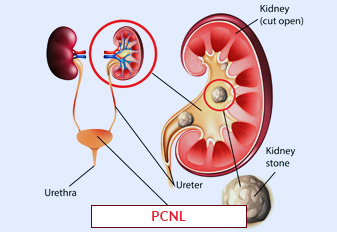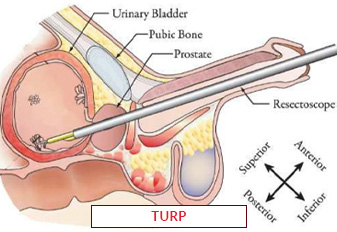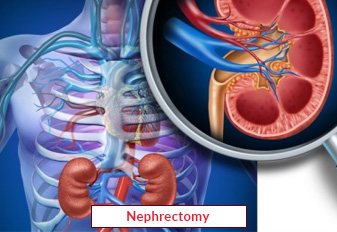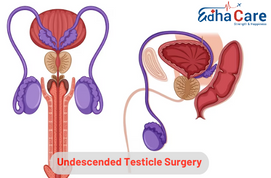Percutaneous Nephrolithotomy (PCNL) Surgery

Percutaneous Nephrolithotomy (PCNL) is a minimally invasive surgical procedure used to remove kidney stones that are too large or complex to be treated with other methods such as shock wave lithotripsy or ureteroscopy. The procedure involves making a small incision in the back and using a small scope and instruments to remove the stones.
Book an AppointmentAbout Percutaneous Nephrolithotomy (PCNL)
Percutaneous nephrolithotomy (PCNL), the best method for large and/or complex stones, is the most effective of the frequently used procedures for kidney stones. During the procedure, the urologist makes a 12-inch incision in your back and inserts a hollow tube to gain access to the kidney stone-containing area inside your kidney. The stones are either taken whole or split into pieces and removed using a stiff metal telescope.
PCNL has a high success rate in removing large kidney stones with minimal complications. However, like any surgical procedure, there are some risks, such as bleeding, infection, and damage to surrounding organs.
Procedure of Percutaneous Nephrolithotomy (PCNL)
Percutaneous Nephrolithotomy (PCNL) is a minimally invasive surgical procedure designed for the extraction of large kidney stones or those resistant to non-invasive treatments. Commencing with precise imaging to locate the stone, the patient undergoes general or regional anesthesia before a small incision is made on the back for percutaneous access.
Using techniques such as laser or ultrasound, the surgeon fragments the stone, facilitating its removal through suction or specialized instruments. In some cases, a nephrostomy tube may be inserted for postoperative drainage. PCNL, known for its efficacy in treating complex kidney stones, offers a minimally disruptive alternative to traditional surgical approaches, ensuring quicker recovery and improved outcomes for patients.
Require Assistance?
Get A Quick Callback From Our Healthcare Experts






